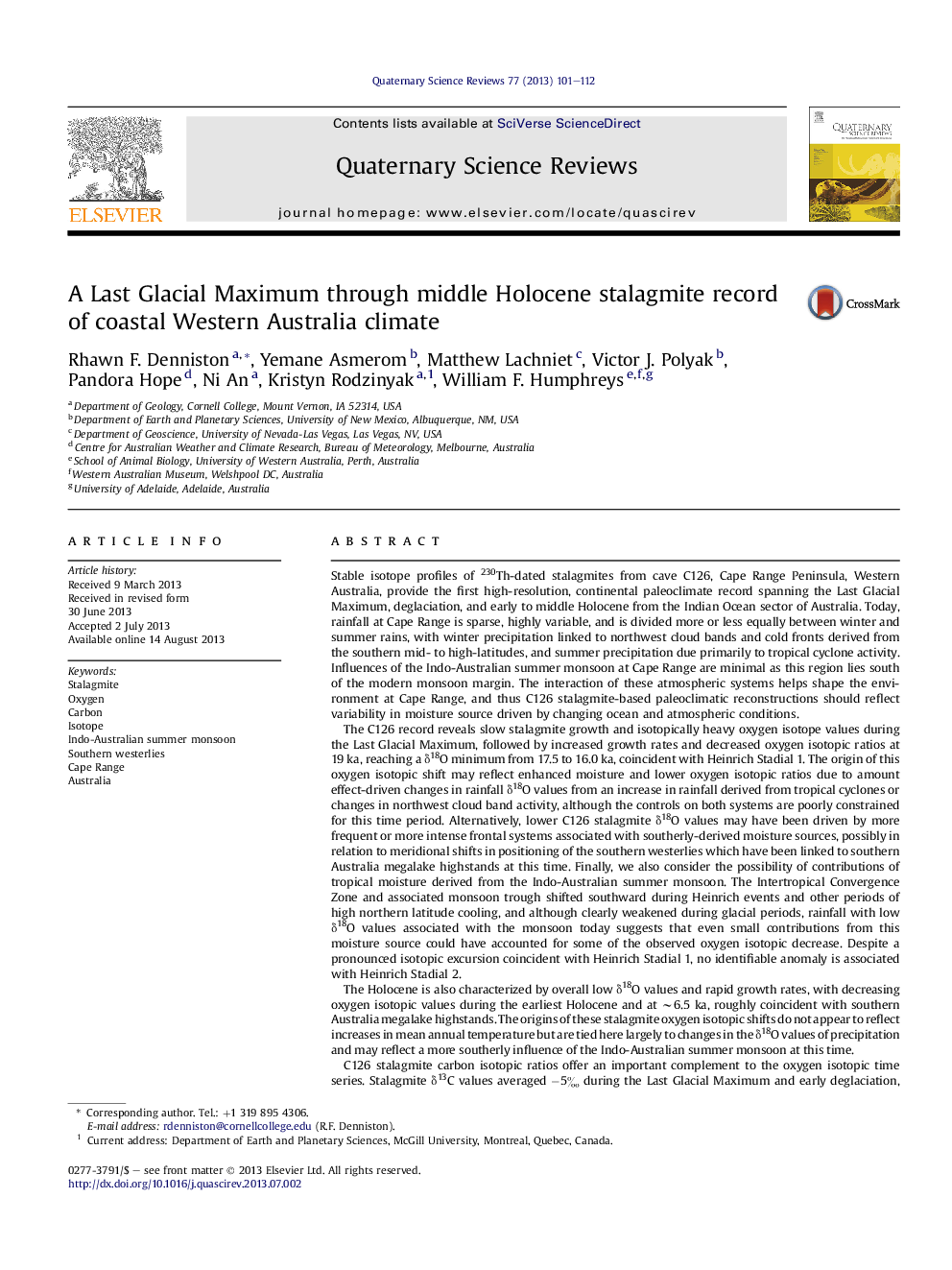| Article ID | Journal | Published Year | Pages | File Type |
|---|---|---|---|---|
| 6446549 | Quaternary Science Reviews | 2013 | 12 Pages |
Abstract
C126 stalagmite carbon isotopic ratios offer an important complement to the oxygen isotopic time series. Stalagmite δ13C values averaged â5â° during the Last Glacial Maximum and early deglaciation, and reached a plateau during the oxygen isotopic minimum at 17.5 ka. However, δ13C values decreased sharply to â12â° between 11 and 8 ka, a shift interpreted to reflect increases in plant density in response to the onset of interglacial conditions. Stalagmite δ13C values at 6 ka are lower than expected for the modern C4-dominated vegetation and thin soils of Cape Range, suggesting that a more C3-rich environment was present during elevated rainfall conditions of the early and middle Holocene. The Cape Range stalagmite time series thus reveals for the first time the millennial-scale sensitivity of the moisture source variations in northwestern Australia, a result that has implications for precipitation dynamics across much of the continent.
Related Topics
Physical Sciences and Engineering
Earth and Planetary Sciences
Geology
Authors
Rhawn F. Denniston, Yemane Asmerom, Matthew Lachniet, Victor J. Polyak, Pandora Hope, Ni An, Kristyn Rodzinyak, William F. Humphreys,
